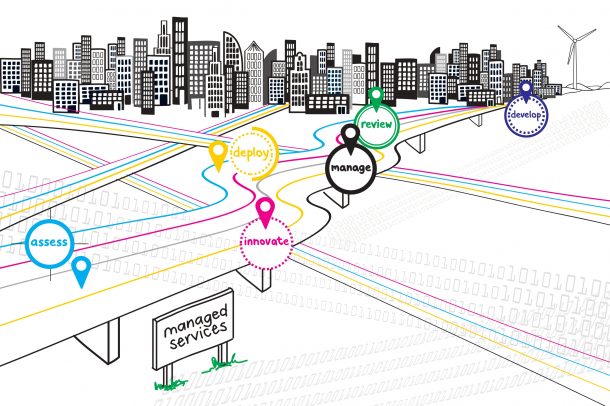Embracing the Trend Towards a Less Paper Office: A Practical Approach

In today’s rapidly evolving corporate landscape, the vision of a completely paperless office seems tantalisingly out of reach. However, a more pragmatic approach is gaining momentum – the trend toward a less paper office. This shift acknowledges the enduring role of paper while emphasising strategies to reduce its usage and optimise digital processes. In this blog, we will explore the benefits and practical steps to embrace this evolving workplace trend.
The Role of Paper in the Modern Office:
Contrary to popular belief, paper continues to play a significant role in many aspects of business operations. From contracts and invoices to reports and meeting materials, paper documents persist as familiar tools in our day-to-day workflows. Acknowledging this reality allows us to approach the concept of a less paper office with practicality and adaptability.
Benefits of a Less Paper Office:
- Flexibility and Collaboration: By transitioning to digital processes while maintaining a measured use of paper, organisations can strike a balance that enhances flexibility and collaboration. Digital documents can be easily shared, edited, and accessed by multiple team members simultaneously, promoting seamless collaboration and reducing delays caused by physical document handling.
- Cost Savings: Embracing a less paper office can lead to substantial cost savings. Reducing reliance on physical paper eliminates expenses associated with printing, storage, and document retrieval. Additionally, it can minimise the need for physical office space and filing cabinets, further streamlining costs.
- Enhanced Efficiency and Productivity: Digital workflows and document management systems offer numerous tools and features that can significantly improve efficiency and productivity. Quick and accurate search functionalities, automated processes, and streamlined approvals are just a few examples of how a less paper office can drive productivity gains.
Practical Steps Towards a Less Paper Office:
- Digitise Existing Paperwork: Begin the journey to a less paper office by digitising existing paper documents. Invest in high-quality document scanners or utilise specialised services to convert physical documents into digital formats. Implement robust document management systems to organise, store, and retrieve digital files efficiently.
- Optimise Digital Workflows: Identify opportunities to streamline workflows and reduce paper dependency. Encourage the use of electronic signatures, digital forms, and online collaboration tools. Leverage workflow automation solutions to eliminate manual, paper-based processes and promote efficiency.
- Establish Clear Guidelines and Training: Introduce clear guidelines and policies regarding paper usage, emphasising the importance of digital alternatives. Provide comprehensive training to employees, ensuring they are well-versed in utilising digital tools and navigating the document management system effectively.
- Prioritise Security and Compliance: As information becomes increasingly digital, it is crucial to prioritise data security and compliance. Implement robust cybersecurity measures, encryption protocols, and access controls to safeguard sensitive information. Adhere to relevant regulations, such as GDPR or HIPAA, when handling digital documents.
- Continuous Evaluation and Improvement: Embrace a culture of continuous improvement by regularly evaluating and refining digital processes. Solicit feedback from employees, monitor performance metrics, and identify areas for further optimisation. Keep abreast of emerging technologies and trends to stay ahead in the journey toward a less paper office.
While the concept of a completely paperless office may remain elusive, the trend towards a less paper office offers a practical and adaptable approach. By leveraging digital solutions, optimising workflows, and balancing the benefits of paper with the advantages of digital processes, organisations can enhance collaboration, increase efficiency, and reduce costs. Embracing this trend requires a shift in mindset, strategic planning, and ongoing commitment to continuous improvement. By doing so, businesses can thrive in a modern, more sustainable work environment.
Remember, embracing a less paper office doesn’t mean eliminating paper entirely, but rather leveraging digital tools and processes to optimise productivity and reduce reliance on physical documents. Let us embrace this evolving trend and unlock the potential for a more efficient and environmentally friendly workplace.
